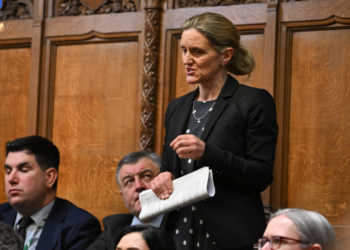Callum Price is Director of Communications at the Institute of Economic Affairs.
It is sometimes said that the best time for a government to do painful but necessary reform is in the first year of the first term.
Given the reception the Government has received this week on its welfare changes (a huge backbench rebellion and briefings against the Prime Minister’s leadership itself), you would be forgiven for thinking their plans were too painful and beyond the pale even for year one.
But that isn’t the case.
The government’s measures, if they last, will save £5bn a year by 2030. To put that number in context, the entire welfare budget is over £300bn (including about £150bn on pensions). The amount the government spends on debt interest is over £100bn. A £5bn saving is better than no saving, but it is a drop in the ocean relatively speaking.
However, as I wrote last month, the precedent has been set with the winter fuel-allowance debacle. Rebel MPs know that if they make enough noise, the government will buckle – even when they claim to take the ‘tough decisions’.
The order of government defeats so far is a neat illustration of the biggest and knottiest fiscal challenges it faces.
Our pensions system is unsustainable and possibly the biggest fiscal black hole we face – but the government’s effort to do sensible if small reform on that has already failed. The scale of our welfare problem comes second only to pensions and is now having its moment in the sunlight of political bun-fights. Again, relatively small changes are sparking a backlash that will likely prove terminal.
Inside Number 10 they will be looking at the long list of rebels thinking – is it worth it? £5bn for an almighty row and a possible historic government defeat? They may come to the conclusion: no. This would be a mistake, but it has been preceded by an even bigger mistake – to shy away from a real solution to the welfare problem in the first place.
Clearly our welfare model isn’t working.
Welfare is one of the biggest wedges of government expenditure and getting bigger. Total spending on health and disability benefits in 23-24 was 25 per cent higher than pre-Covid and forecast to hit £100bn by 29-30. Meanwhile, the welfare system is criticised from both left and right. To some, it is too punitive, too burdensome and not nearly generous enough. To others, it is too generous, and far too easy to game.
What is certain is that it creates perverse incentives. You don’t have to look far to find a story of someone who is on sickness or disability benefit who would like to return to work but can’t afford to. The withdrawal of benefits as people return to work means that taking up employment can incur huge effective marginal tax rates that don’t make the added hours of labour worth it, or worse, it would make them entirely worse off altogether.
As Dr Steve Davies has pointed out for the Institute of Economic Affairs today, it is clearly time for a serious rethink on how we do welfare in the UK. We must look at non-state solutions.
Many of the problems inherent in our current system come about because it is too centralised, bureaucratic, and inflexible.
Recipients of are made to jump through hoops and people inevitably fall through the cracks, meanwhile welfare traps proliferate and each attempt to reduce inefficiencies, make cuts, or divert resources just moves problems from one part of the system to another.
The system should be much more local, run by people who understand their service users’ needs properly.
No central government could possibly design a system from Whitehall to be as responsive and sensitive to the needs of a vast array of users as it should be – they could never have all the right information at the right time. Local service providers are used today but too often their time and resource is taken up writing applications for Government funding and then proving how they delivered on those applications, rather than doing the actual delivering.
A non-state solution could provide answers to all of these problems. But as Dr Davies points out, that doesn’t necessarily mean a solution based on profit, or even a model based on charity or philanthropy.
Serious thought should be put into running our welfare system on the principles of mutual aid – a bottom-up, voluntarist, pluralistic system, rather than a top-down, managerial one.
In a model of this type, local actors would be able to provide services based on decentralised and tacit knowledge, of the kind that a central government could never properly access but that can be key in changing outcomes for individuals. Someone may struggle with a combination of mental health and addiction issues that requires complex cross-sector support to allow them to address their problems, while another might have a niche but specific need that if addressed would unlock opportunities for them, such as access to the internet; in either case, a locally run model will be better equipped to help identify the problems and their solutions sustainably than a one-size fits all state system. There would be a greater role for voluntarist organisations, and of course still be a role for the state, either to provide a safety net or national minimum level of service, but it would not be a state-owned and run monopoly.
This sort of system would be a radical departure from the last half century of welfare provision in the UK.
It would need serious collective and national thought at the scale of a Royal Commission, and cross-party agreement on the need to do something differently. But if any party was willing to take it on, it could lay the groundwork for an untying of the gordian knot and a lasting solution to a broken and unsustainable system.
Something that might even be worth grinding through a backbench rebellion for.




![Man Arrested After Screaming at Senators During Big Beautiful Bill Debate [WATCH]](https://www.right2024.com/wp-content/uploads/2025/06/Man-Arrested-After-Screaming-at-Senators-During-Big-Beautiful-Bill-350x250.jpg)












